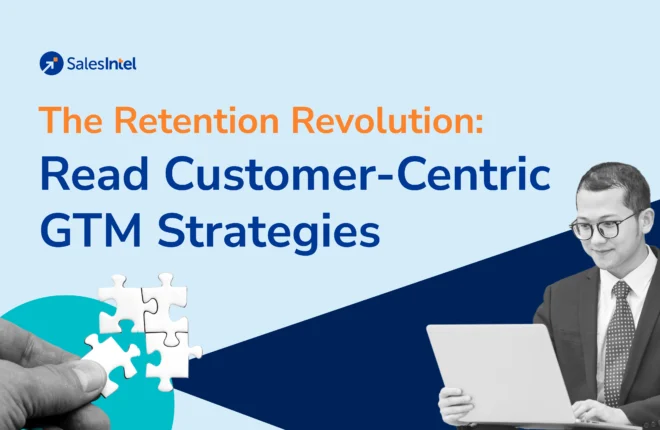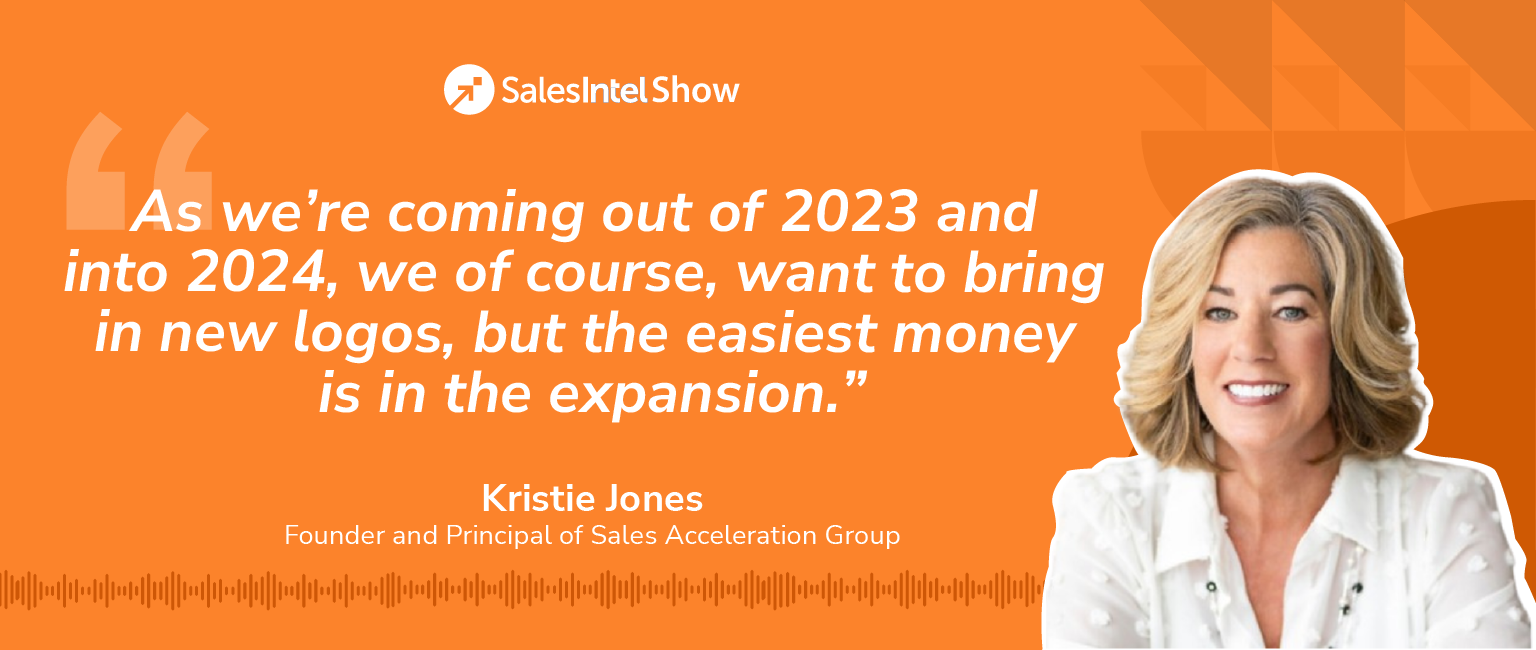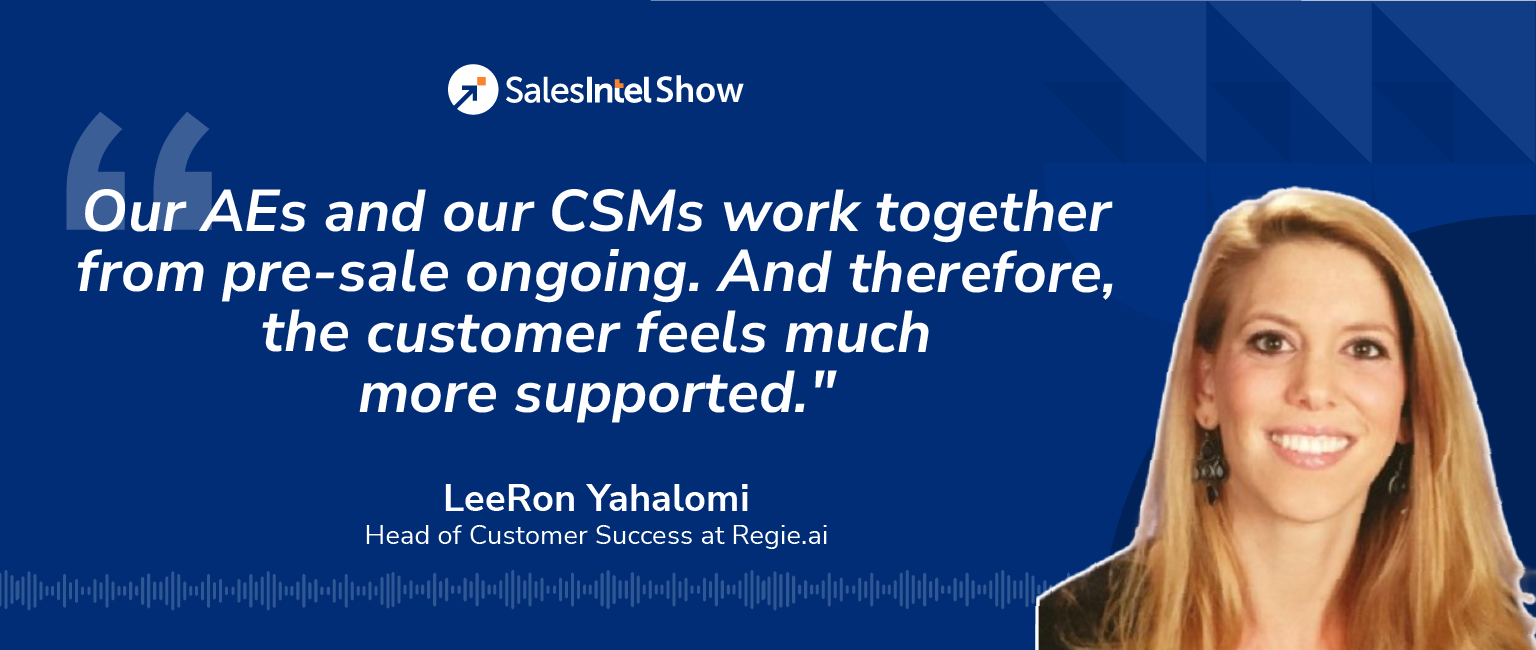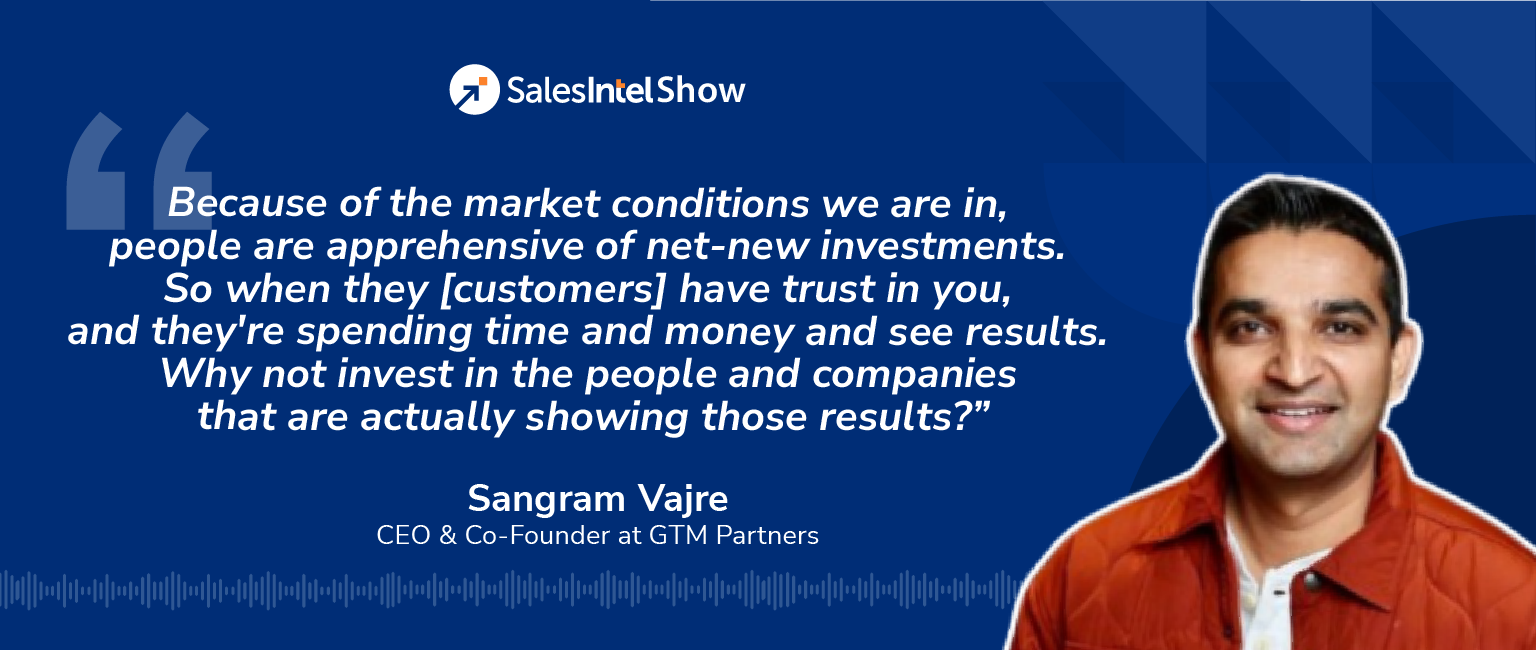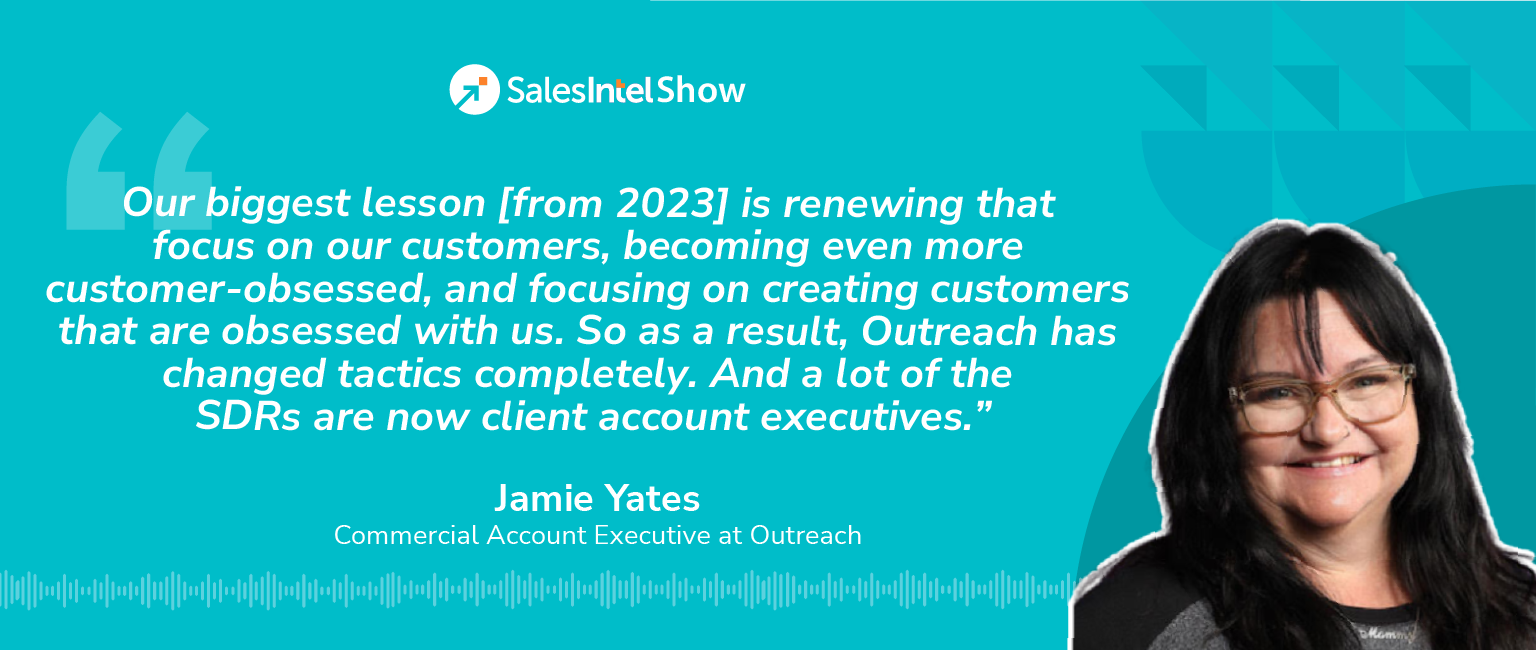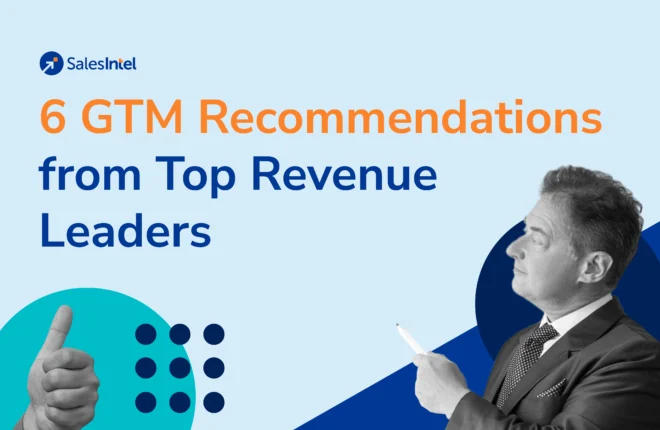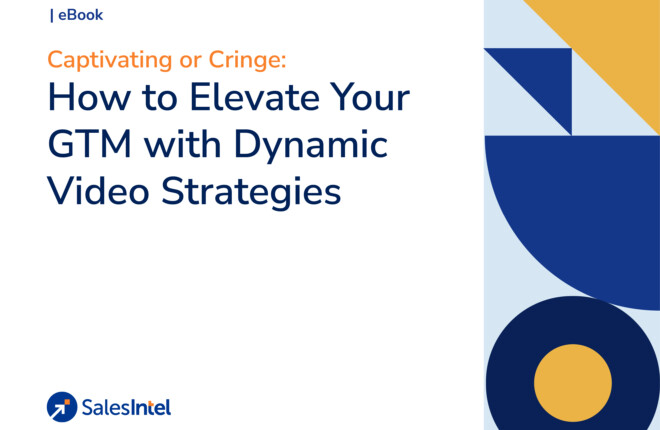With 2025 more than half complete and economic uncertainty still looming, you, like many business leaders, may be looking for new ways to shore up finances and create predictable revenue streams to keep your business growing.
However, with budgets tightening and buyers inundated with sales and marketing messages from companies offering similar benefits, the traditional focus on acquiring new logos and aggressive outbound prospecting gives way to a more nuanced, customer-centric approach.
In this article, we’ll discuss the fundamental shift in go-to-market (GTM) tactics, from traditional tactics to an emphasis on cultivating relationships with existing customers through long-term account retention and expansion as a driver of sustainable business.
Where Our Data Comes From
Data is knowledge, and knowledge is power. If we’re making bold claims, we better have the data to back it up. Fortunately, we do.
On our Pipeline Pioneers podcast, Manoj Ramnani, SalesIntel’s CEO, talks with revenue leaders across the SaaS industry about the latest trends, strategies, tips, tricks, and other factors driving success. Part of the podcast involves playing the 100 Pennies Game–an interactive exercise to gauge how business leaders are prioritizing different growth strategies.
From the many guests we’ve had on the show, we can see where revenue leaders are placing their bets in the coming quarters and which investment mix they believe will unlock their business’s next phases of growth. So far, customer-led growth is a standout favorite.
The Decline of Traditional GTM Tactics
It’s no secret that 2023 was a tough year for the SaaS industry. A one-two punch of rising interest rates and increased market competition combined to cause a major slowdown in growth and the highest churn rate on record.
But beyond the rate of new customers signing and current customers leaving, pipeline velocity dragged to a crawl. From 2022-2023, the average startup sales cycle increased by 24% (from 60 to 75 days), and the average Enterprise sales cycle increased by 36%.
Unless you’ve drastically changed tactics to adapt, you’ve probably seen a similar trend within your organization. You may have also noticed that traditional sales or marketing-led GTM tactics aren’t yielding the same results they once did – that the old playbook of hiring armies of SDRs and AEs to aggressively pursue new business is becoming less effective and more costly.
The Rise of Customer-Centric GTM
For your organization to survive and thrive in uncertain economic times, you’ll have to adapt and explore new operations, strategies, and technologies to maximize your focus on this often underutilized source of sustainable growth—your customers.
NRR: The Next BIG Metric
Net revenue retention (NRR) measures how well your business can retain and expand customer relationships by examining account expansion, renewals, upsells, churn, and contraction. It provides a strong indicator of your business’s financial health, growth potential, and long-term viability and is quickly becoming the most important metric for remaining in the black during a downturn.
“As we’re coming out of 2023 and into 2025, we of course, want to bring in new logos, but the easiest money is in the expansion.” – Kristie Jones, Founder and Principal of Sales Acceleration Group, B2B Pipeline Pioneers Episode 29: Creating Expansion Strategies for Long Game Wins
A high NRR suggests that customers are staying and increasing their usage or adopting more products over time. This is a strong indicator of the value customers derive from a brand, which is why top revenue leaders are placing higher focus and resources into building customer-focused programs that boost NRR and using it as a critical metric for success.
Building a Customer-Centric Growth Strategy
Here are a few ways you can build a more customer-centric business strategy:
Break Down AE & CSM Silos:
To truly support your customers, your sales and success teams cannot operate in a vacuum. Thriving in the age of customer-centricity requires rethinking how your customer-facing teams are structured and how they collaborate.
Account executives may have traditionally handed customers off to a customer success rep once a deal is close. However, a more open, collaborative approach from the beginning—long before the deal is closed—will help create a seamless customer experience that opens up more opportunities for account growth.
“Our AEs and our CSMs work together from pre-sale ongoing. And therefore, the customer feels much more supported.” – LeeRon Yahalomi, Head of Customer Success at Regie.ai, B2B Pipeline Pioneers Episode #43: Nailing Client Handoffs
Your goal should be creating a unified team focused on the customer’s long-term success, not just the initial sale. This will go a long way in ensuring customers receive consistent, high-quality support throughout their journey with your company.
Focus on Account Expansion:
Account expansion is where your CSMs shine. It involves upselling, cross-selling, or introducing new features to current customers, and it is some of the most valuable and lowest-hanging fruit in a customer-centric approach, especially in turbulent economic times.
Research from Wharton Business School found that the probability of selling to an existing customer is up to 14 times higher than the likelihood of selling to a new customer.
“Because of the market conditions we are in, people are apprehensive of net-new investments. So when they [customers] have trust in you, and they’re spending time and money and see results. Why not invest in the people and companies that are actually showing those results?” – Sangram Vajre, CEO & Co-Founder at GTM Partners, B2B Pipeline Pioneers Episode 25: Long-Term Pipeline Growth: Deepening Customer Relationships and Broadening Partnerships
Companies like Outreach have already started to capitalize on this trend by transferring salespeople from chasing new logos to more customer-focused roles.
“Our biggest lesson [from 2023] is renewing that focus on our customers, becoming even more customer-obsessed, and focusing on creating customers that are obsessed with us. So as a result, Outreach has changed tactics completely. And a lot of the SDRs are now client account executives.”– Jamie Yates, Commercial Account Executive at Outreach, Pipeline Pioneers Episode 21: Shifting Focus: Strategies for Customer-Centric Revenue Growth
By prioritizing your customer success initiatives and making sure your team is proactively engaging with customers, understanding their needs, and helping them derive maximum value from your product, you can provide a much better experience and increase the likelihood of cross-sells, upsells, and greater expansions.
Don’t Overlook Referrals:
Building strong customer relationships opens the doors for expansion within an organization and for others.
While referrals generally fall into the “new logo” bucket, they are still earned by building strong relationships and delighting your current customers.
Customer referrals are one of the best and most cost-effective sources of new logo generation with referral leads 30% more likely to convert than other channels. Additionally, research has shown that 88%-92% of consumers trust recommendations from friends, family, and colleagues.
“No one wants to hear me talk about me, but having a customer talk about why they partner with you is so impactful. We not only buy from people, but we buy from people like us.” – LeeRon Yahalomi
Referrals offer a point of social proof that goes a long way in standing out among the sea of competition. A glowing recommendation from a colleague or similar company could make all the difference when a potential buyer is deciding between your solution and another.
Identify and Mitigate Churn Risks Early:
You likely know how much more costly it is to bring in new customers than to keep existing ones. Depending on the industry, it’s generally accepted to be around five times more expensive to bring on a new customer. But beyond the sheer cost of new customer acquisition vs. retention. If you want to build a sustainable and scalable business, new logo creation alone won’t get you there.
Think about your revenue goals like trying to fill a bucket with water. A bucket with no holes will quickly fill and retain its water, but if your bucket is full of holes, you’ll lose most if not all of the water that you pour in.
Utilizing intent data within your retention strategy, you can continuously monitor your customer base’s satisfaction and identify accounts actively researching alternative providers or solutions.
For example, you notice someone searching for your competitors online at one of your largest customer accounts. While that customer has not yet called you to cancel your services, chances are high that they could be searching for another provider. In this case, you could have your customer success manager reach out to address any potential issues, send a dedicated marketing nurture sequence highlighting the benefits of your service, and even have the sales rep who closed the deal personally reach out to their internal champion to ensure they’re still happy with your organization.
By understanding which accounts are at risk of churn, you can proactively engage with those at-risk customers with coordinated retention-focused outreach across sales, marketing, and customer success to address any potential issues before any cancellation requests are sent.
The New Paradigm for Growth
The shift towards a customer-centric growth strategy is not just a trend but a necessity for building and maintaining a sustainable business in 2025. By nurturing existing customer relationships, prioritizing account expansion, leveraging referrals, and proactively mitigating churn risks, you can build more resilient revenue streams in the face of economic uncertainty.

